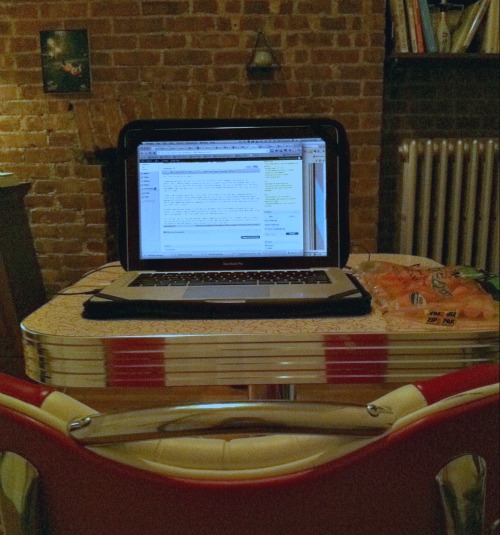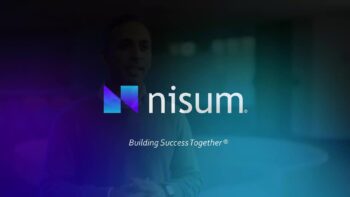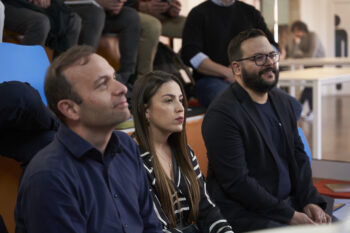Last week, I came across this post on the 37signals blog Signal v.s Noise. The post shows the workstations of each member of the 37signals team. For a company that is well known for preaching about the sanctity of uninterrupted work time, I appreciated seeing the real workstations of each team member. It helped me picture them practicing what they preach.
In his article The Way I Work: Jason Fried of 37signals, Jason writes: “We want to get rid of interruption as much as we possibly can, because that’s the real enemy of productivity”. The company even enforces quiet times during the afternoons when no one is allowed to talk, unless they are having a client meeting. In their view, every interruption comes with a tax because it breaks up someone’s workflow. Over time, this can lead to a lot of lost productivity. I agree with this philosophy. I’ll also take it a step further.
I think companies should increase productivity by eliminating forced office hours.
The typical tech company holds varying hours compared to most corporations thanks to the legacy of alternative office culture that started in Silicon Valley. Sure, the hours can be a slog at tech companies, but working late into the night and over the weekends when you are getting ready for a product release is the norm. I’m not too concerned with the long hours. I love them. What I am concerned with is that productivity and creativity is being lost through slow leaks throughout the workweek. Here’s how:
Creativity comes in fits and spurts.
Have you ever stared angrily at your computer while trying to fix a bug, then you jump into the shower disgusted with yourself, and you solve the problem while shampooing your hair? It’s happened to me. When you try to force creativity and problem solving, your brain is tense and you can’t access the solution. When you stop thinking about it, the solution comes to you easily. During forced work hours in an office environment, it’s rare that you are allowed to go outside for an afternoon hike to process the the thoughts in your brain. Instead, you have to sit at your desk and look like you are working, when your brain is screaming for a processing break.
Peak work hours are different for everyone.
In college I discovered by accident that I couldn’t stay up late to write last minute research papers like my peers. The night before a creative writing project was due, I fall asleep with my laptop next to me. I woke up before dawn in a panic and started to feverishly finish the piece before my morning class. It was then that I discovered that my most productive time of the day is 4am – 9am. Even through my transition out of college and into the professional workforce, my brain just flows before most people get up and have their first cup of coffee. Similarly, I have a lot of developer friends who produce their best work after midnight and into the weekends. And yet, we work on teams from 10am – 6pm Monday – Friday, when we are all off our peak natural productivity times.
Annoying habits disrupt teammates.
I have a bad habit of crunching on vegetables loudly when I work. For hours. The sound slices through the air of everyone around me, but it helps me concentrate, and keeps me from digging into office junkfood. We’ve all had teammates that annoy us by eating smelly fast food at their desks, or playing their music so loud that you can hear Lil Wayne blasting through their headphones. Forcing a team of workers to be together in a shared space can lead to grudges if teammates have especially annoying habits.
A flexible schedule promotes health and wellbeing.
Midday workouts, long lunches, and a few hours of downtime after a few hours of focused work can help workers remain balanced despite a heavy workload. Many companies have tried to create the illusion of offering their employees work/life balance by bringing massage therapists in for treatments and replacing office furniture with a ping pong table. What that is really doing is trapping workers in the zoo. By allowing your employees to break up their day between taking care of work, themselves, and their families, they will be less likely to rack up sick days.
Working outside of the physical structure of the official office promotes free thinking.
Workers need a complete break to outside of the office to promote unsupervised free thinking. Notice how different a team acts when they are outside of the office together. Once you let employees out of the office environment, they feel more free to let their unrestricted thoughts and opinions out. That’s what you hired them for, right?
I do think that teams should be able to come together at scheduled times occasionally to discuss work progress and assign tasks. This could be once a week or every morning. Some scheduled face time either in the office or via Skype is good. It ensures that everyone is on the same page. But teams won’t be at their best if everyone is expected to remain in the office Monday – Friday for at least 8 hours a day.
I have a few different places that I like to work. One of them is a cozy tea shop in downtown Boulder, CO called Atlas Purveyors. On any given workday, you can find at least 3 startup founders banging out code or meeting with potential investors. It’s the kind of place where you can stand up and ask a question about code and at least someone who knows the language you are working in can come over to your table and help you out. Plus, their chai is rockin’.
My other favorite place to work is in my New York apartment. I work near my husband in the living room as he works on his own projects. We schedule regular breaks to go out for a coffee or for a run, and we get things done. Here is the desk in my apartment: a 50’s style diner table with some baby carrots.
It’s not much, but it’s all mine. You don’t need a pimped out workstation like a treadmill desk or a view of the city skyline to feel great and be productive. What you do need is the ability to come and go as you please so that your passion, drive, and abilities shine in your work.







